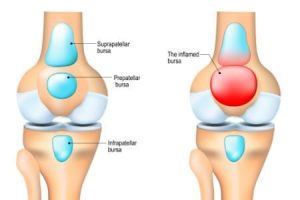Knee Tendon Bursitis
Causes, Symptoms, Risk Factors, Complications, Prevention and Treatment
Knee tendon bursitis also known as pes anserine bursitis is an inflammation of the bursa that is located between the tibia and tendons present on the inside of the knee. This condition occurs when the bursa is irritated that causes it to produce extra fluid, which causes swelling and increases pressure to other parts of the knee.
What is Knee Tendon Bursitis?
It is the condition wherein bursa near the knee joint becomes inflamed. It usually occurs over the kneecap or inner side of the knee, but other areas of the knee bursa may also get affected.





 Appointment
Appointment WhatsApp
WhatsApp Call
Call More
More